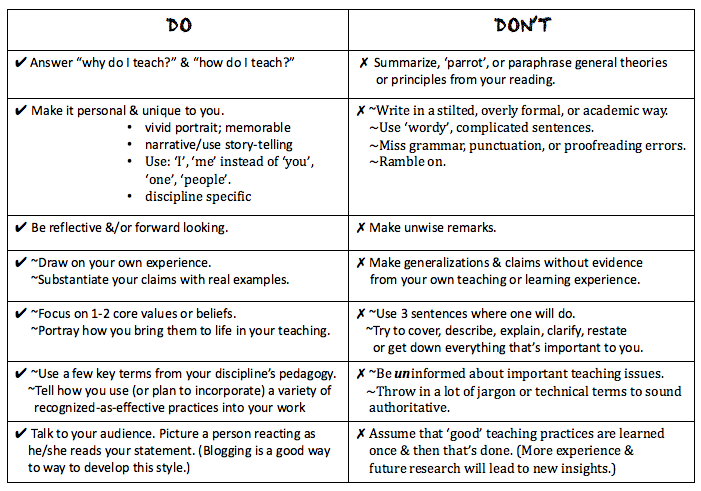Activity
Section outline
-

-
Facilitators: Sue Hellman and Sylvia Currie
Course written and designed by Sue Hellman
 Writing a teaching philosophy statement is a complex task. The volume of 'how to' articles and samples available online can be overwhelming. In this course, you'll find a shortlist of resources organized into a process designed to move you from the initial step of collecting your thoughts to composing a first draft (at least) and receiving peer feedback. You can follow along sequentially or cherry pick topics and activities that best fit your needs.
Writing a teaching philosophy statement is a complex task. The volume of 'how to' articles and samples available online can be overwhelming. In this course, you'll find a shortlist of resources organized into a process designed to move you from the initial step of collecting your thoughts to composing a first draft (at least) and receiving peer feedback. You can follow along sequentially or cherry pick topics and activities that best fit your needs. THANKS to those of you who have already completed the short survey. If you haven't already done so, it's not too late. No names will be made public.
Compose your first draft. Share it in the forum.
If, when you did the last activity, you used a list with categories that suggested a structure, your brainstormed ideas may already be organized for writing. If not, look back over those links in the previous activity for ideas or take a look at Katherine Kearns & Carol Sullivan's (Indiana U., 2012, pp.140) five suggested formats in Table 3.
Whatever structure you choose, make sure that you "'own' your philosophy." If you're going to use it as part of your syllabus, for a job interview, promotion, etc., what you say you do and what you can be seen to be doing must be aligned.
There are a couple of tools you can use to make your TPS public: Google Docs and Draft (https://draftin.com/) which is also free. I encourage you to take a look at their features page. If you're using a Google Doc, adjust the privacy settings to 'anyone with the link can view'. If you're going to want a reviewer, enable commenting as well (but not editing). Share the link in the forum.